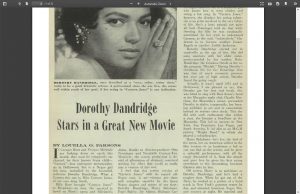“Prove it on me Blues” was written in 1928 by Ma Rainey. It was also performed and recorded in 1928. Her music was recorded in Chicago by the Chicago Music Publishing Company. Rainey’s song was intended for Black queer individuals, the Black community in general and any folks who enjoyed vulgar Blues music during the time period of the Harlem renaissance and the roaring twenties. The purpose of this song was to address Rainey’s sexual and emotional desire for women. It reveals her identity as a woman who was attracted to people of her same sex. Therefore, “Prove it on me Blues” exposed Rainey’s queer, or bisexual identity. The lyrics described her preference for women during that time period and the ways in which she acted upon her sexual urges through flirting with women at parties and being openly queer in public spaces. Rainey’s song relates back to my exhibition because her song represented her ability to proudly express her sexual agency and oppose heteronormativity by singing about engaging in romantic acts with other women.
The National Museum of American History and Culture holds an image of Gladys Bentley in New York. The date, photographer and owners are unknown.This image worked to encourage others to attend her Blues music and comedy shows. Her infamous identity consisted of wearing men’s clothing and actively flirting with other women. Words on the left side of the image state, “America’s greatest sepia piana artist”. The right side of the image has words that say, “Brown bomber of sophisticated songs”. She wore a white top hat tilted to the side along with a white men’s tuxedo. She was holding a cane on her right side with a smirk on her face. Both the words and her attire work to attract queer women to become fans of her artistry. This image of Bentley connects to my exhibition because her clothing opposed gender norms. Her fashion statements while performing dismantled gender norms that applied to women during the Harlem renaissance era. The Smithsonian Magazine contains information regarding Bentley.

